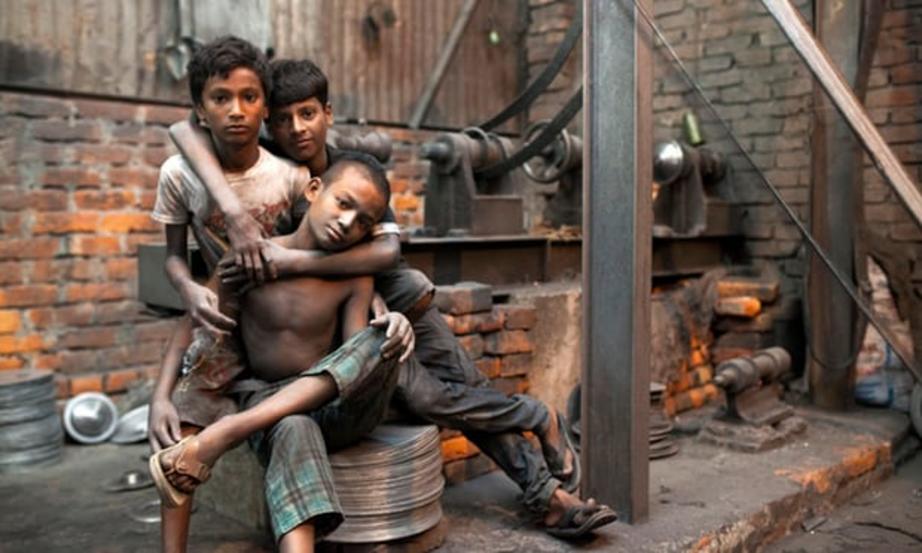Latest figures reveal more than 40 million people are living in slavery
An estimated 40.3 million people were victims of modern slavery in 2016, a quarter of them children, according to new global slavery statistics released today.
The figures, from the UN’s International Labour Organisation (ILO) and the Walk Free Foundation, show 24.9 million people across the world were trapped in forced labour and 15.4 million in forced marriage last year. Children account for 10 million of the overall 40.3m total.
The 2017 Estimates of Modern Slavery report calculates that of 24.9 million victims of forced labour, 16 million are thought to be in the private economy, 4.8 million in forced sexual exploitation and 4.1 million in state-sponsored forced labour including mandatory military conscription and agricultural work.
“What is startling about these new estimates is the sheer scale of the modern slave trade and the fact that we have 40 million people across the world in some form of modern slavery is simply not acceptable,” said Fiona David, executive director of global research at the Walk Free Foundation.
“When you have 24.9 million people working under threat or coercion in farming, fishing and construction or in the sex industry and yet according to the United Nations only 63,000 victims of slavery were reported to the authorities last year, the gulf between the problem and the insufficient global response becomes very clear.”
The research also indicates that while many forced labourers reported violence or threat, the majority of them are exploited through debt bondage and non-payment of wages.
“We found that 50% of the 24.9m people in forced labour are in debt bondage, often arriving at a job with high recruitment debts to pay off or forced to take a job to pay off debt and with 7% of forced labourers saying their employers are forcing them to pay fines while at work,” said Michaëlle de Cock, senior statistician at the ILO.
“How forced labour affects the whole family is also very clear with 18% of male forced labourers surveyed saying that their employers directly threatened their families or children.”
The new global estimate also deals with forced marriage, the first time it has been included in any reporting of modern slavery figures.
“It isn’t clear why forced marriage has often been overlooked as a form of slavery in data reporting,” said David. “If you have a situation where someone is sold into marriage and is providing free domestic labour and has no sexual autonomy, then when you take the label of marriage away from this situation it’s often nothing less than slavery and we need to shine a light on this so that people can see it for what it is.”
According to the new global estimates, modern slavery is most prevalent in Africa, followed by Asia and the Pacific, although the ILO and Walk Free say that these results should be interpreted “cautiously”, due to a lack of available data from the Arab states and the Americas.
“We believe that the global estimate of 40.3 million is the most reliable data to date, although we believe it to be a conservative estimate as there were millions of people we couldn’t reach in conflict zones or on the refugee trail and places where we couldn’t be sure of collecting robust data such as the Gulf states, where access and language barriers prevented us from reaching the migrant worker communities,” said de Cock.
Researchers found that more than 70% of the 4.8 million victims of sex trafficking were in the Asia and Pacific region, while forced marriage was found to be the most prevalent across African countries.
The global estimates were calculated by drawing on a range of data over a five-year period, including interviews with more than 71,000 people across 48 countries. The ILO and Walk Free Foundation also used figures from the UN’s International Office for migration (IOM) and other UN agencies.
These figures are a marked increase from the ILO’s previous estimates of 21 million people in forced labour worldwide. The ILO and Walk Free attribute the rise to better reporting and research methodologies and the inclusion of forced marriage as a form of modern slavery.
The research was carried out as part of the drive to meet the sustainable development goal on slavery, which calls for the eradication of all forms of slavery, human trafficking and child labour.

